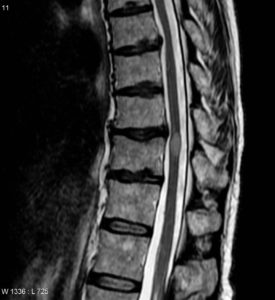Most people with back pain do not suspect that they may be suffering from back arthritis, even though it’s the most common cause of back pain. Arthritis in the back usually affects the spine causing facet joints inflammation. Other times, it might cause inflammation of the sacroiliac joints, which sit between the spine and the pelvis.
It could also affect the areas where the tendons and ligaments attach to the spine bones. You should know that if spinal arthritis isn’t addressed in time, the pain will become chronic and the damage irreversible. This is why it’s advised that you see a spine doctor as soon as you start having back pain.
Symptoms of Back Arthritis
Having your arthritis in the back diagnosed early means that you will have an easier time managing it. Here are some of the symptoms you should be looking for to know that you need to see a doctor.
- Back pain that is concentrated in the lower back
- Stiffness and reduced range of motion
- Tenderness around the affected vertebrae
- A grinding sensation when you move your back
- Difficulties in performing everyday functions such as getting out of bed and tying shoes
- In the case where the spinal nerves are affected, you will experience shooting pain, tingling, numbness, weakness in your arms and legs
- Pain around the lower back (thighs, buttocks, and pelvis)
- Swelling, pain, or stiffness in the knees and the other joints in your hands and feet
Causes
Apart from autoimmune triggers and normal wear and tear, health experts are unsure about other exact causes of spinal arthritis. The jury is still out on whether genetic factors can increase the risk of one developing the condition. Here are some factors believed to contribute to the onset of the condition.
- Obesity
- Age
- Existence of other ailments diabetes, psoriasis, gout, Lyme disease, and irritable bowel syndrome
Types of Arthritis of the Spine
Suppose you are seeking treatment for spinal arthritis; it’s essential you know which type you have. This is because different types require different treatment routines. Arthritis of the back can be divided into two categories, inflammatory and degenerative arthritis. Here are the most common types of arthritis of the back.
Osteoarthritis
Osteoarthritis is the most prevalent form of arthritis of the back and falls under the degenerative category. It typically results from wear and tear and affects the lumbar region of the back. The wear and tear causes the cartilage between the spine joints to degrade, which brings about pain and inflammation. Pain from Osteoarthritis becomes more noticeable when you twist or bend your back.
Rheumatoid arthritis
Rheumatoid arthritis (RA) is considered inflammatory arthritis and is caused by an autoimmune disorder. In this case, the body’s immune system starts attacking parts of the body, including the synovium – the connective tissue lining the joints. RA affects other joints of the body and sometimes extends to the spine causing spinal arthritis. The condition is more common in women than in men, and if you have it, you will likely experience joint pain even when resting.
Spondyloarthritis
Spondyloarthritis is a collection of inflammatory ailments that target joints and areas where tendons and ligaments attach to bones throughout the body. Some forms of spondyloarthritis are more common for back arthritis, and they include:
Psoriatic arthritis: This condition is caused by an autoimmune disorder called psoriasis, prominent for its itchy, scaly rash. Psoriasis can come before or after the onset of arthritis.
Ankylosing spondylitis: This condition primarily affects the spine leading to the inflammation of the sacroiliac joints and vertebrae. In its advanced stages, the condition may cause vertebrates to fuse, resulting in a hunchback.
Reactive arthritis: This condition results when an infection in another part of the body causes joint inflammation. Most of the time, the triggering infection is in the genitals or bowel. The spine joint inflammation often occurs in the lumbar and typically subsides on its own.
Enteropathic arthritis: This arthritis usually develops after one catches inflammatory bowel disease (IBD), though not everyone with the disease develops arthritis.
Conditions caused by Back Arthritis

Arthritis of the spine can lead to the onset of other conditions like bone spurs, which in advanced stages can result in the narrowing of the spinal cord passage. This can develop into spinal stenosis, excess compression of the cord inside the spine. The passage of the nerves exiting the spinal cord can also narrow, leading to radiculopathy. More conditions caused by back arthritis include:
- Collapsed vertebrae
- Kyphosis
- Stress fractures
Diagnosing Spinal Arthritis
You will have to be checked by a spinal doctor to receive a diagnostic confirmation that you have arthritis of the spine. Your medical history will be checked, and you will be undergo a physical exam to check your range of motion and other factors. You may also have to undergo some blood tests for RA antibodies and genetic markers. An X-ray will be done to figure out the vertebrae affected by arthritis. Moreover, your spine doctor might order an MRI, or CT scan to examine the extent of the damage on the vertebrae, spinal cord, and nerves.
Back Arthritis Treatment
The treatment approach for your back arthritis will vary depending on your personal health goals, the severity of the condition, pain levels, and age. For cases where there is irreversible damage, the treatment will prioritize preventing further damage and managing pain. You might have to undergo surgery if standard pain management treatment is ineffective.
Spinal arthritis treatments that are nonsurgical include medication meant to relieve specific symptoms and physical therapy. There are also non-steroidal anti-inflammatory drugs (NSAIDs) for dealing with swelling and reducing pain. Your doctor might also recommend lifestyle changes like improving posture, losing weight, and quitting smoking.
For the case of surgical treatment, there are open procedures and minimally invasive procedures. The surgery’s goal will be to deal with the bone spurs to free the nerve roots and decompress the spinal cord passage. A spinal fusion procedure can also be done to stabilize the spine. Keep in mind that no matter what surgical option you go for, each will have its pros and cons. It’s vital that you listen to the your spinal surgeon’s advice and choose the best option for you.


